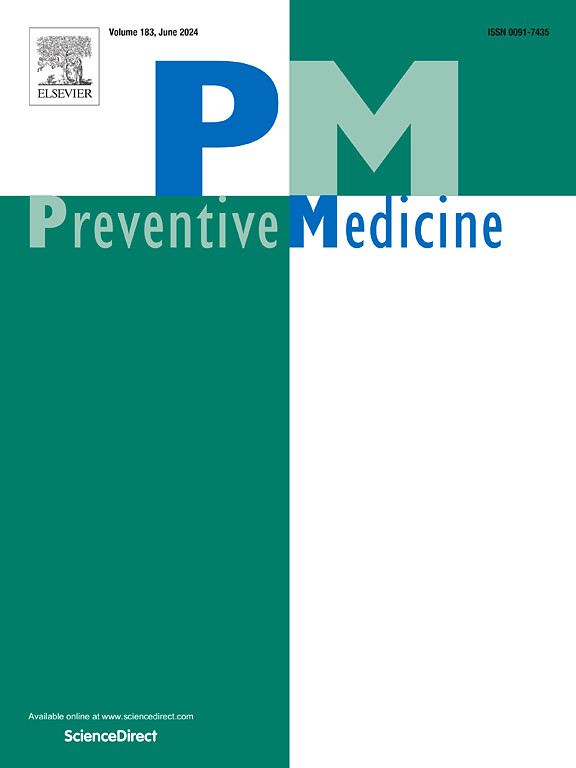加州亚美尼亚人胃癌、肺癌、结直肠癌和膀胱癌的诊断阶段和癌症特异性生存率。
IF 4.3
2区 医学
Q1 MEDICINE, GENERAL & INTERNAL
引用次数: 0
摘要
目的:观察加州亚美尼亚人常见癌症的诊断分期和肿瘤特异性生存率。方法:我们使用加州癌症登记处的亚美尼亚姓氏列表和出生地信息来识别1988-2019年诊断为胃癌、肺癌、结直肠癌和膀胱癌的亚美尼亚人。我们使用多变量逻辑回归模型来计算亚美尼亚人和非亚美尼亚人、非西班牙裔白人患者的晚期诊断几率,并检验亚美尼亚患者群体中社会人口统计学因素与晚期诊断的关系。我们使用Cox比例风险模型来计算亚美尼亚患者与非亚美尼亚、非西班牙裔白人患者的癌症特异性生存率。结果:在确诊的639,224例癌症诊断中,有6642例是亚美尼亚患者。亚美尼亚的个体更有可能被诊断为晚期结直肠(或 = 1.12,95 CI % = 1.03 - -1.22)、肺(或 = 1.26,95 CI % = 1.12 - -1.42),和胃(或 = 1.43,95 CI % = 1.17 - -1.74)癌症。在亚美尼亚患者中,低nSES和公共保险与晚期诊断相关。亚美尼亚人比non-Armenian更好的生存,非西班牙裔白人个体对胃(HR = 0.85,95 CI % = 0.76 - -0.94)、肺(HR = 0.86,95 CI % = 0.82 - -0.91),结肠直肠(HR = 0.82,95 CI % = 0.77 - -0.88),和膀胱(HR = 0.87,95 CI % = 0.76 - -0.99)癌症。结论:虽然亚美尼亚人晚期诊断为结直肠癌、肺癌和胃癌的风险更高,但与非亚美尼亚人、非西班牙裔白人患者相比,他们的生存率更高。需要进一步的研究来了解影响亚美尼亚人生存的因素,包括遗传、行为和社会因素。我们的研究发现,较低的nSES和公共健康保险与晚期诊断相关,这表明加州亚美尼亚人口需要增加获得护理和癌症筛查的机会。本文章由计算机程序翻译,如有差异,请以英文原文为准。
Stage at diagnosis and cancer-specific survival for stomach, lung, colorectal, and bladder cancers among Armenians in California
Objective
To observe stage at diagnosis and cancer-specific survival for common cancers among Armenians in California.
Methods
We used the Armenian Surname List and birthplace information in the California Cancer Registry to identify Armenians with stomach, lung, colorectal, and bladder cancers diagnosed during 1988–2019. We used multivariable logistic regression models to calculate odds of late-stage diagnoses among Armenian and non-Armenian, non-Hispanic White patients and examine the association of sociodemographic factors with late-stage diagnoses among the Armenian patient population. We used Cox proportional hazards models to calculate cancer-specific survival among Armenian patients compared to non-Armenian, non-Hispanic White patients.
Results
Of the 639,224 cancer diagnoses identified, 6642 were among Armenian patients. Armenian individuals were more likely to be diagnosed with late-stage colorectal (OR = 1.12, 95 % CI = 1.03–1.22), lung (OR = 1.26, 95 % CI = 1.12–1.42), and stomach (OR = 1.43, 95 % CI = 1.17–1.74) cancers. Among Armenian patients, low nSES and public insurance were associated with late-stage diagnoses. Armenian individuals had better survival than non-Armenian, non-Hispanic White individuals for stomach (HR = 0.85, 95 % CI = 0.76–0.94), lung (HR = 0.86, 95 % CI = 0.82–0.91), colorectal (HR = 0.82, 95 % CI = 0.77–0.88), and bladder (HR = 0.87, 95 % CI = 0.76–0.99) cancers.
Conclusion
While Armenian patients were at greater risk of late-stage diagnoses of colorectal, lung, and stomach cancers, they had better survival compared to non-Armenian, non-Hispanic White patients. Further research is needed to understand factors impacting survival in Armenian individuals, including genetic, behavioral, and social factors. Our findings of lower nSES and public health insurance associated with late-stage diagnoses suggest a need for increased access to care and cancer screening among the Armenian population in California.
求助全文
通过发布文献求助,成功后即可免费获取论文全文。
去求助
来源期刊

Preventive medicine
医学-公共卫生、环境卫生与职业卫生
CiteScore
7.70
自引率
3.90%
发文量
0
审稿时长
42 days
期刊介绍:
Founded in 1972 by Ernst Wynder, Preventive Medicine is an international scholarly journal that provides prompt publication of original articles on the science and practice of disease prevention, health promotion, and public health policymaking. Preventive Medicine aims to reward innovation. It will favor insightful observational studies, thoughtful explorations of health data, unsuspected new angles for existing hypotheses, robust randomized controlled trials, and impartial systematic reviews. Preventive Medicine''s ultimate goal is to publish research that will have an impact on the work of practitioners of disease prevention and health promotion, as well as of related disciplines.
 求助内容:
求助内容: 应助结果提醒方式:
应助结果提醒方式:


